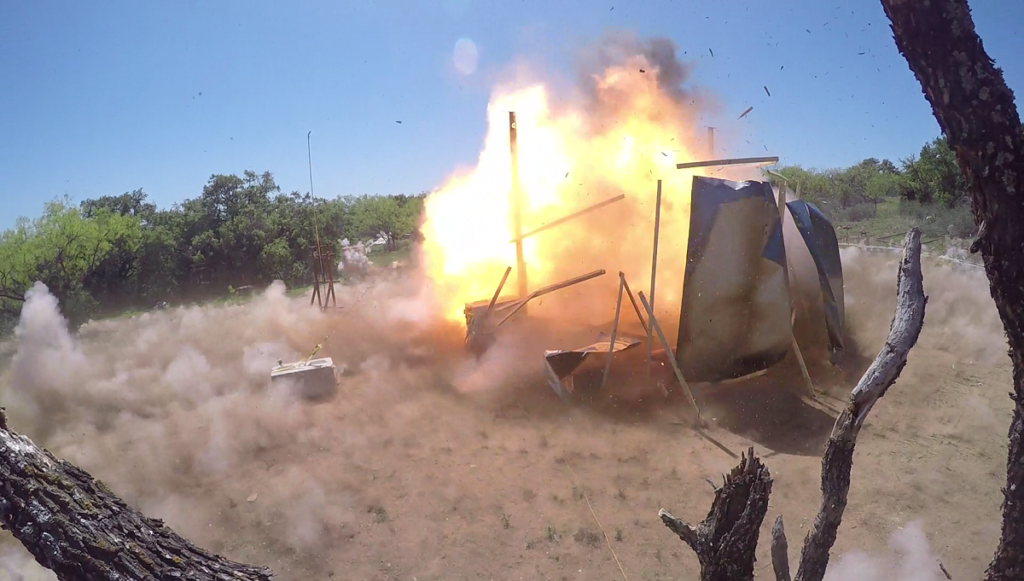The large NC3 (Nuclear Command, Control & Communications) architecture, comprised of systems made up of many airborne, space-based, and terrestrial components meant to connect nuclear forces in the US to the president, could use some sprucing up, according to Air Force Chief of Staff Gen. David Goldfein. He believes that the Defense Department should think about using commercial low-Earth orbit satellites to create “a more resilient NC3.” But something else that could help strengthen the architecture – 3D printing nuclear weapons.
“Much is changing here in the nuclear world. There are more nations seeking to join the club. Some with high technology, some with low technology,” said Chief of Naval Operations Admiral John Richardson at a recent breakfast in Washington, DC that was hosted by the Mitchell Institute for Aerospace Studies. “It’s relatively simple. With the advent of additive manufacturing and 3D printing, these types of weapons are going to be very easy to craft in very small scale.
“We’ve got to make sure that we revitalize the nuclear command-and-control system … to harden it against all of the modern challenges.”
 Adm. Richardson is anticipating that other nations could start using 3D printing to create atomic arsenals and other weapons, such as dirty bombs that spread radioactive materials with high explosives. The Navy Chief made these remarks as a partisan argument on Capitol Hill continues brewing about the future of our country’s own arsenal, saying that the 2018 Nuclear Posture Review had proposed the US “bolster deterrence” by getting some low-yield nuclear weapons.
Adm. Richardson is anticipating that other nations could start using 3D printing to create atomic arsenals and other weapons, such as dirty bombs that spread radioactive materials with high explosives. The Navy Chief made these remarks as a partisan argument on Capitol Hill continues brewing about the future of our country’s own arsenal, saying that the 2018 Nuclear Posture Review had proposed the US “bolster deterrence” by getting some low-yield nuclear weapons.
The review states, “In the near-term, the United States will modify a small number of existing [submarine-launched ballistic missile] warheads to provide a low-yield option, and in the longer term, pursue a modern nuclear-armed sea-launched cruise missile.”
Adm. Richardson says that it’s important for the US to stay a few steps ahead of any potential threats by continuing to do research on the latest weapons development, as the entire world could be entering into a time where 3D printed explosives and nuclear weapons are the norm. Other powerful countries, like Russia, have already built up arsenals of low-yield nuclear warheads, which is obviously concerning to planners at the Pentagon as these kinds of “asymmetric capabilities” could pose a large threat to our own military advantages.
“The low-yield nuclear weapons … tried to address some of these asymmetries that have emerged since we last really did some research. The nuclear element of this [force] mix … deserves a lot more attention in my book,” Adm. Richardson stated.

On March 29, 2018, Orbital ATK tested for the first time a partially 3D printed warhead meant for hypersonic applications in Burnet, Texas. [Image: Orbital ATK]
However, the version of fiscal year 2020 National Defense Authorization Act (NDAA), created by the Democrat-led House Armed Services Committee, would ban the military from deploying any low-yield nuclear weapons on US Navy submarines. But many of the Republicans in Congress are backing the current administration’s plans for strategic modernization…which includes acquiring these low-yield nuclear weapons. In fact, the Senate’s version of the NDAA for 2020, which was developed by the GOP-led Senate Armed Services Committee, wants to authorize the full funding of these programs.
In the next few months, as lawmakers from the House of Representatives and the Senate begin conferences to negotiate the terms of the final NDAA bill, the disagreement about these policies could really ramp up, and as of now, it’s anyone’s guess as to the outcome. If you thought the controversy surrounding 3D printed guns was bad, I can’t imagine what it will be like when the topic is about 3D printing actual nuclear weapons…the stakes are far greater.
What do you think – are 3D printed nuclear warheads an imminent possibility? Discuss this news and other 3D printing topics at 3DPrintBoard.com or share your thoughts in the Facebook comments below.
[Source: National Defense]Subscribe to Our Email Newsletter
Stay up-to-date on all the latest news from the 3D printing industry and receive information and offers from third party vendors.
You May Also Like
US Army Corps of Engineers Taps Lincoln Electric & Eaton for Largest 3D Printed US Civil Works Part
The Soo Locks sit on the US-Canadian border, enabling maritime travel between Lake Superior and Lake Huron, from which ships can reach the rest of the Great Lakes. Crafts carrying...
Construction 3D Printing CEO Reflects on Being Female in Construction
Natalie Wadley, CEO of ChangeMaker3D, could hear the words of her daughter sitting next to her resounding in her head. “Mum, MUM, you’ve won!” Wadley had just won the prestigious...
Blue Laser-powered M600 3D Printer Launched by Meltio
Founded in 2019 as a joint venture between Additec and Sicnova, metal 3D printer OEM Meltio develops and manufactures high-performance and easy-to-use metal 3D printing solutions that use its patented wire-laser metal...
3D Printed Storage Tanks Cut Material Costs by 25%
In a previous article, “Concrete Dreams: Let’s Print Money, Not Houses,” we discussed how the spotlight on 3D printing homes might be misplaced. Bollards, pedestrian bridges, and concrete tanks could...






























